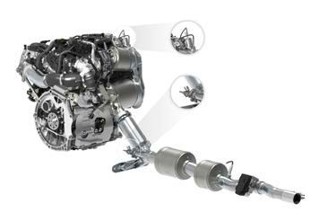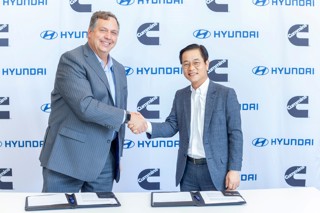By Andrew Overton, CEO at Connexas Group
Technology companies with an understanding of predictive telematics and the commercial benefits it can bring for transport operators are playing an increasingly important role in shaping the future of fleet management.
The telematics field has been evolving rapidly to meet the needs of the industry over the past decade.
Much of this has involved the move to a single box solution, capable of receiving data from a variety of onboard sensors and other equipment in order to deliver real-time information to managers.
As well as being more compact and easier to install, these advanced telematics systems are capable of analysing vast amounts of data in order to alert the end user to any current or potential issues.
By informing their decision making, this can help towards reducing risk and improving operational efficiency and compliance.
Next generation telematics systems have access to vast quantities of real-time data – everything from the speed the vehicle is travelling, the engine’s RPM, accelerator use, what gear the vehicle is in, tyre pressure, engine temperature, oil and water levels and much more.
Recognising the need to analyse and filter this information, solutions providers have been developing smart alerting systems, capable of delivering the right information to the relevant manager.
For example, if a tyre is losing pressure and in danger of a blow out, an alert goes to the transport manager so they can take the appropriate action.
Alternatively, if a driver starts the engine of a vehicle without entering a tacho card into the onboard reader, or an alcohol interlock device indicates a driver has given a sample that is close to, or over, the legal alcohol limit, an alert is sent to the compliance manager.
Designed to integrate with the job management systems used by most of the major logistics operators, modern telematics solutions have become a live management tool that can help businesses to function at their best.
With driver wellbeing a growing area of focus for many transport operators, it is now possible for telematics systems to access real-time data from sensors in wearables such as smartwatches in order to monitor the health of drivers.
At Connexas, we are currently involved in trials with Garmin, which involve using a third-party health analytics provider to analyse driver sleep patterns, exercise, heart rate and other data in order to provide drivers with bespoke advice.
This information is not only valued by drivers who benefit from greater understanding of their own health and wellbeing, it can also help transport operators to predict and prevent health-related events.
The use of onboard camera systems and CCTV has also been an important area of development.
Making visual data available via the same single-box system, which is integrated with AR, face recognition and ADAS systems, means transport managers can see whether a driver is in danger of falling asleep at the wheel, is distracted, or is doing anything that could otherwise compromise their safety and that of other road users.
In the event of an accident, footage taken prior to and after the accident can be replayed in real-time in order to provide information to the insurance company or to inform driver behaviour training.
Giving transport operators access to tailored real-time data, which is sifted according to its level of opportunity, is turning them into the industrial equivalent of F1-racing teams.
No longer are fleet or transport managers simply responsible for running reports and presenting data back to the business.
They are problem solvers, capable of agile decision making to optimise efficiency and improve safety as part of day-to-day operations.
By making better-informed decisions, they can prevent accidents, minimise insurance premiums, enhance driver health and wellbeing and improve delivery outcomes – all bringing measurable commercial benefits.
By working closely with tech partners, there is an opportunity for transport operators to harness connected vehicle technologies to drive value, support driver wellbeing and accelerate the way to a return on investment.

















Login to comment
Comments
No comments have been made yet.